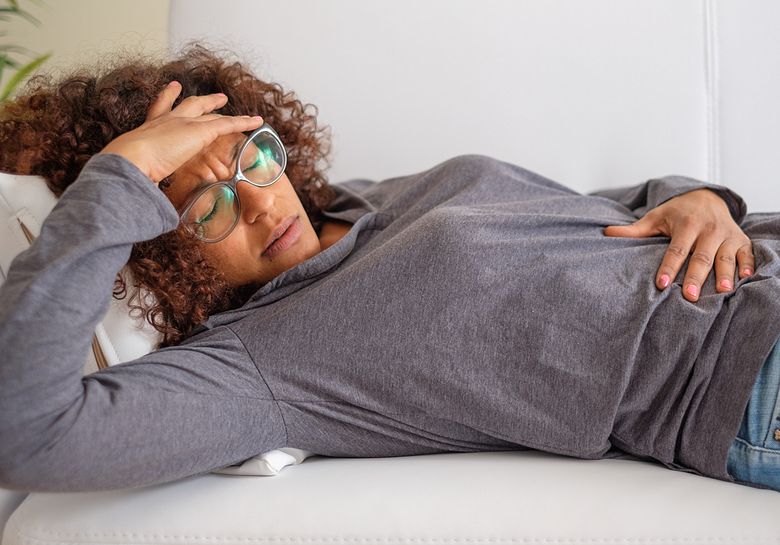Backed by science
Our diverticulitis programs are based upon the latest science and aligned with medical protocols
Whether you learn best with one-on-one support or in a small group setting, we have the perfect program for you.
We also offer a wide array of self-guided materials, empowering you with valuable resources to further support your transformation.
How Nutrition Coaching Works
Our programs are meticulously designed to help you achieve your health goals while enhancing your overall well-being.
We provide personalized counseling and unwavering guidance, ensuring that every step of your journey is met with success.
Take Our QuizOnPoint's team of highly skilled online dietitians and nutritionists are dedicated to empowering you with the knowledge and tools to cultivate sustainable habits that lead to long-lasting success on your health and wellness journey.
Diverticulitis Doesn't Have to be a Pain
Work with your doctor and dietitian to build a diverticulitis diet to manage the condition

Diverticulitis may have impacted you unexpectedly. It can be a very uncomfortable condition, with symptoms that include stomach pain, nausea, abdominal tenderness, and even constipation. To best manage diverticulitis:
Learn the foods to eat that can help avoid a flare-up
Understand the protocols if your diverticulitis becomes "active"
Integrate these specific recommendations into your day-to-day routine
Diverticulitis is one of the most common gastrointestinal (GI) conditions, affecting over 2.5 million people in the United States. More cases of diverticulitis may be unknown because of a lack of symptoms. Although it can be challenging to diagnose, doctors use CT Scans and other lab tests to identify diverticulitis.
Diverticulitis is the active, symptom-presenting form of diverticulosis. Many people live years with diverticulosis without ever showing symptoms. Diverticulosis is diagnosed when small pouches form in the lining of the digestive system, known as diverticula. These pouches develop in weak spots of your digestive system. Over time, they push through the walls of the digestive system and can become inflamed and infected.
Obesity
Having a BMI over 30 is considered overweight. A research study by the American Gastroenterological Association found that patients considered overweight/obese were much more likely to experience diverticulitis flare-ups.
Diet high in red meat
Consuming a diet high in red meat is associated with higher body fat and weight gain. Those who consume a diet consisting of mostly red meat are 58% more likely to develop diverticulitis, compared to those who do not.
Lack of exercise
Exercise lowers the risk of diverticulitis by decreasing constipation and releasing pressure from the digestive system. When there is a lot of pressure across the digestive system, small pouches are more likely to form.
Diet low in fiber
A diet high in fiber has shown to aid in digestion helping to regulate bowel movements. The more you go, the less pressure in your system, decreasing the risk of developing diverticulitis.
Age
As you age, the connective tissue in the lining of your digestive system weakens, resulting in a higher chance of developing pouches that can rupture and become inflamed.
When a Diverticulitis flare-up occurs, you may experience severe abdominal pain, fever, nausea and a change in bowel habits. Mild cases can be treated with diet, rest, and antibiotics. Severe cases may require surgery. About 75% of cases are considered mild, and can be treated easily with lifestyle changes. If left untreated, diverticulitis complications may occur, including perforations, abscesses, obstructions, and fistula, within the digestive system. Long term impacts include sepsis (systemic infection).
Diverticulitis treatment depends on the severity of your symptoms. Your doctor will likely use CT Scans and other lab tests to diagnose your condition.
Mild cases of diverticulitis are treated using diet modifications and antibiotics. Severe cases will require immediate doctor attention, sometimes resulting in surgery. For mild cases of diverticulitis, treatment is designed to relieve stress on your digestive system, which gives your body time to rest and heal. Symptoms should improve in 2-3 days. Treatment decisions will progress depending on your specific symptoms.
We share quick tips for Diverticulitis treatment below.
Progression of Treatment for Diverticulitis Flare-Up |
|
|---|---|
|
1. Nothing by Mouth |
Refrain from eating for a few hours up to one day. |
|
2. Clear Liquid Diet |
Begin to incorporate broth, ice pops, Jello, water, apple juice for a few days. |
|
3. Soft Food Diet |
When you start to feel better add yogurt, applesauce, rice, bananas, fruit without skin. |
|
4. Return to Regular Diet |
You should feel better within a few days. This is when you can slowly return to a regular diet. |
* IMPORTANT NOTE: if at any point a fever develops, abdominal pain increases, or you are unable to keep clear liquids down, contact your doctor. These symptoms are sign of more adverse complications.
A flare up can occur when pressure in your digestive system is too high, (constipation). To avoid constipation, consume a high quality, gut-healthy diet consisting of lean protein and high fiber.
Below are our guiding principles:
Key Points of a Diet to Prevent a Diverticulitis Flare-up |
|
|---|---|
|
Lean Protein Eating meat low in fat will aid in weight loss and keep you feeling full longer. |
White meat poultry, white fish, plant-based proteins |
|
High Fiber Insoluble fiber adds bulk to the stool and increases the rate at which food passes through the stomach and intestines, helping to prevent constipation. |
Whole grains, brown rice, fortified cereals, quinoa |
|
Vegetables Starchy vegetables will increase fiber consumption aiding indigestion. |
Leafy greens, peas, squash, parsnips, sweet potatoes |
|
Fruit Fruit high in fiber will help to relieve constipation, and boost immunity. |
Pears, apples*, oranges, prunes |
|
Healthy Fats Fat is a biological necessity and will increase hormone production, aid in vitamin absorption, and improve heart health and brain function.
|
Avocado, nut butters, olive oil |
Certain foods can irritate your digestive lining and cause pain and discomfort. These foods are specific to each case of diverticulitis, so it is important to be mindful of specific trigger foods that may cause your flare-ups. Avoid foods that are hard to digest, so that these items do not become stuck in your GI diverticula (pouches).
Seeds
Poppy seeds, chia seeds, flax seed, sesame seeds can get stuck in diverticula. It is best to avoid fruit with seeds such as strawberries, raspberries, and blackberries
Raw vegetables
Veggies can be harder to digest because the insoluble fiber is fully intact and can increase pain and discomfort. Cooking your vegetables will help your body break down fiber easily.
Corn
The fiber and sugar content in corn causes come stomach discomfort, causing inflammation in the digestive system.
Spicy foods
Spicy foods can lead to gut inflammation, resulting in vomiting and diarrhea. It is best to avoid these types of foods so that diverticulitis symptoms do not become worse.
Cruciferous Vegetables
High fiber vegetables such as broccoli, cabbage, and artichokes are high in fiber and can be difficult to digest. Eating them may cause gas and bloating.
Milk Products
People with diverticulitis may not digest lactose well. Even people who are not lactose intolerant will notice bloating, gas and inflammation when eating and drinking products such as milk, cheese, and yogurt.
Greasy, High Fat, Fast Food
High fat, fried food stimulates the digestive system and causes inflammation, resulting in acid reflux that can irritate diverticulitis symptoms.
Excessive Alcohol
High alcohol consumption increases your risk of developing diverticulitis by 2-3x. Scientists think that the condition may be linked to alcohol due to decreased intestinal motility.
Eating fiber depends on the stage of your condition: diverticulosis vs diverticulitis.
Fiber is the most important nutrient in preventing a diverticulitis flare or alleviating its symptoms if one occurs.
We have dedicated an entire page to helping you build fiber into your Diverticulitis Diet.
Diverticulosis(inactive symptoms) |
Diverticulitis(active symptoms) |
|---|---|
|
During this stage, symptoms are not present and it is important to eat a high fiber diet to discourage inflammation and constipation. Food High in Fiber:
|
During this stage, symptoms are active (flare-up) resulting in discomfort, inflammation, and infections. Consuming a low fiber diet allowsyour digestive system to heal. Food Low in Fiber:
|

Mild cases of diverticulitis can be treated with nutrition therapy. First, your doctor is likely to use CT Scans and other lab tests to diagnose your condition. Oftentimes, process step begins with a clear liquid diet. A diverticulitis clear liquid diet is a medically indicated protocol for severe GI conditions. This liquid diet is a temporary solution that gives your digestive system a chance to rest and heal.
The objective is to keep your body hydrated while still providing you with the nutrients you need. The clear diet can be helpful for a day or two; we work with you to make a plan to transition your system away from the liquid diet once your symptoms dissipate. If you have diabetes, work with a nutritionist for diverticulitis, so that we can make sure your body gets the right amount of carbohydrates and we can help you monitor your blood sugar.
A typical day on a diverticulitis clear liquid diet may look like: |
|
|---|---|
Breakfast |
|
Snack |
|
Lunch |
|
Snack |
|
Dinner |
|
The BRAT Diet was created as a mnemonic device to help people remember the foods that can help alleviate a diverticulitis flare.
The original foods in this protocol include bananas, rice, apples and toast... however, it has since been expanded to include other mild foods that can help alleviate diverticulitis symptoms.
The BRAT Diet includes specific foods across all of the food groups: vegetables, fruits, starches, proteins... and even drinks.
Hopefully, the clear liquid diet has calmed your digestive system. Once you are feeling normal again, we recommend transitioning to a low residue diverticulitis diet. This philosophy consists of eating low fiber foods that your body can digest easily. Think of "low residue" as gentle on the digestive system.
Low residue foods include:
Stools vary in color, texture, size, and odor, which is typically not a concern and will resolve on its own in a day or two. However, there are certain stool characteristics that may suggest GI issues or other health conditions.
Signs of irregular stool during a Diverticulitis flare may include:
Read more about stool shape vs irregular stool during Diverticulitis flares here.
Although the root cause of diverticulosis is unknown, researchers believe diverticula form from high levels of pressure pushing on weak spots in the colon wall. When your diet is low in fiber, stool motility through the intestines slows down, which increases transit time and pressure.
Diverticular pouches form in weak areas of your colon where blood vessels pass through the colon wall. Diverticular bleeding occurs when these blood vessels (within the pouches) burst open due to too much pressure.
In most cases, diverticular bleeding will resolve on its own. However, in extreme cases, treatment may be necessary to stop the bleeding and replace lost blood. You may need to receive IV fluids, medicine, blood transfusions, and in rare cases, surgery, to remove the affected area of the colon.
Diverticular bleeding may be alarming, but in most cases it is harmless. The bleeding will likely resolve on its own within a day or two. If the bleeding is severe, or you begin to feel lightheaded or weak, contact your doctor to determine if further intervention is needed.
Learn more about Diverticular Bleeding on our full write up.
Acute Diverticulitis symptoms are similar to other inflammatory bowel conditions, but the location of the symptoms is different from other GI issues (Ulcerative Colitis, Crohn’s, etc.). Typically, diverticulitis will present in the lower left abdomen, while other GI conditions cause more widespread pain. Symptoms of Acute Diverticulitis include:
Learn more about Acute Diverticulitis, including how it's treated over both the short and long term, in our full write up.
Perforated Diverticulitis symptoms are similar to an acute Diverticulitis attack, only worse. Additional symptoms include an indication of sepsis, which is a severe bodily infection. Symptoms of perforated Diverticulitis are listed below:
If your Diverticulitis symptoms worsen or you experience 3 or more of the above symptoms at once, contact your doctor.
Learn more about Perforated Diverticulitis, including treatment options, on our blog.
Yes, you should be able to. Unless you have an extreme condition, your GI system should be able to tolerate most foods within a few weeks after a flare-up or "attack".
You may choose to avoid foods that cause severe issues for your body, such as whole intact seeds. Your diverticulitis diet should always feel as though you are in control of your routine and your food choices.
Even after a flare-up, do your best to not fear food! We can help!

Our diverticulitis programs are based upon the latest science and aligned with medical protocols

Our nutritionists build your unique plan based upon your body type, food preferences, and lifestyle

Our team includes registered dietitians (RDs) with hands-on experience helping people with diverticulitis
“My team and I would be honored to be part of your health journey! Our priority is your health and happiness; no goal is too big or too small. We look forward to working with you soon!”
